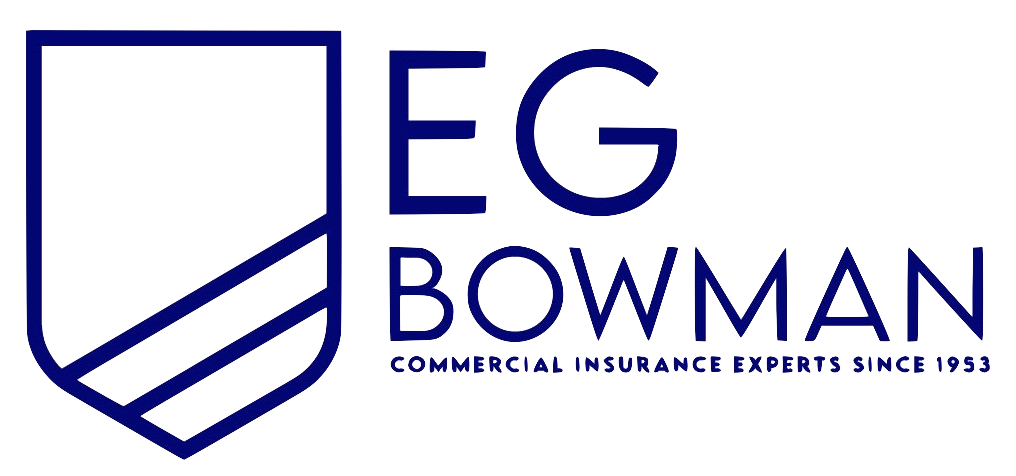
Most Common Business Policies
Index
Contact Us
School insurance in New York is an essential aspect of protecting educational institutions against various risks and liabilities. Understanding the different types of insurance available, as well as the specific regulations that govern them, can help schools make informed decisions to safeguard their assets and manage risks. This article will cover the basics of school insurance, delve into different types of coverage, provide guidance on selecting the right policy, and explore the role of the New York State Education Department in this domain.
Understanding the Basics of School Insurance
School insurance is designed to protect educational institutions from financial loss due to unforeseen events such as accidents, property damage, and legal claims. It encompasses a range of policies tailored to meet the unique needs of schools, including coverage for both students and staff.
The importance of having adequate school insurance cannot be overstated. It not only helps schools manage risks but also provides peace of mind for educators, parents, and the community. Investing in insurance is a proactive approach to addressing potential issues before they escalate into costly disasters.
The Importance of School Insurance
In the fast-paced environment of education, incidents can occur unexpectedly. Whether it involves a student injury during a recreational activity or damage to school property, having comprehensive insurance coverage can mitigate the financial consequences of such events. This enables schools to focus on their primary mission: educating students.
Moreover, school insurance helps foster a safe learning environment by ensuring that there are financial resources available to address any claims or incidents that arise. This assurance can enhance the overall reputation of the school and promote trust among stakeholders. When parents know that their children are protected in case of an accident, they are more likely to feel confident in the school's ability to provide a safe and nurturing environment. This trust can lead to increased enrollment and community support, which are vital for the school's success.
Key Features of School Insurance
Typically, school insurance policies offer several key features, including:
- Coverage for property damage: Insures physical buildings and property against losses due to fire, theft, and natural disasters.
- Liability coverage: Protects against legal claims arising from injuries or damages that occur on school premises.
- Workers' compensation: Provides coverage for staff injuries occurring during the course of their employment.
- Student accident coverage: Offers protection for injuries that students sustain while participating in school-related activities.
Understanding these features can help schools tailor their insurance to fit their specific risk profile. Additionally, many insurance providers offer customizable options that allow schools to add endorsements or riders for specialized activities, such as field trips or sports events. This flexibility ensures that schools can adapt their coverage as their programs evolve, providing a safety net that can grow alongside their needs.
Furthermore, schools can benefit from risk management services that often accompany insurance policies. These services may include safety audits, training programs for staff, and resources for emergency preparedness. By actively engaging in risk management, schools not only reduce the likelihood of incidents but also demonstrate their commitment to the safety and well-being of their students and staff. This proactive stance can be a significant factor in lowering insurance premiums over time, making it a financially savvy choice for educational institutions.

Types of School Insurance in New York
In New York, schools can choose from several types of insurance to cover various risks. These policies allow institutions to create a safety net that protects them from a range of potential disruptions.
Property Insurance for Schools
Property insurance is crucial for schools, as it protects physical assets against damage from events such as fire, vandalism, or extreme weather. This type of insurance covers not just the school building itself, but also essential equipment, furniture, and educational materials.
Schools should conduct regular assessments of their property to ensure adequate coverage levels. This includes taking inventory of all items that need protection and considering any recent renovations or upgrades that may affect their insurance needs. Additionally, schools may want to explore options for specialized coverage that addresses unique risks, such as technology equipment insurance for computers and other digital learning tools, which are increasingly vital in modern education.
Liability Insurance for Schools
Liability insurance shields schools from legal claims due to negligence that results in injury or property damage. It is particularly important for incidents that occur during school activities or on school grounds. This coverage can extend to various scenarios, including accidents during after-school programs or physical education classes.
Having robust liability insurance helps schools manage legal costs and settlements, safeguarding their financial stability and reputation. Additionally, many districts require schools to carry adequate liability coverage to meet state and accreditation requirements. Schools should also consider the implications of cyber liability insurance, especially as they increasingly rely on technology for administrative tasks and student data management, which can expose them to data breaches and cyber threats.
Workers' Compensation Insurance for Schools
Workers' compensation insurance is mandated by law in New York, providing essential protection for school employees injured on the job. This type of insurance covers medical expenses and lost wages for employees who are unable to work due to work-related injuries.
Schools must ensure they comply with state regulations regarding workers' compensation and maintain appropriate policies to avoid potential liabilities. Regular training and safety measures can also help reduce workplace injuries and the associated costs. Furthermore, schools might consider implementing wellness programs aimed at promoting employee health and safety, which can lead to fewer claims and a more productive work environment. By fostering a culture of safety, schools not only protect their staff but also enhance the overall learning atmosphere for students.
How to Choose the Right School Insurance in New York
Choosing the right school insurance involves careful consideration of several factors. Schools should assess their unique needs and risks to select coverage that best protects their interests.
Assessing Your School's Insurance Needs
Before purchasing insurance, schools must conduct a thorough analysis of their risk exposure. This includes identifying potential hazards, such as high student traffic areas, and evaluating past incidents to understand what types of coverage are most beneficial.
Engaging with stakeholders, including faculty, staff, and even parents, can provide valuable insights into perceived risks and necessary coverage. Once schools have a clear understanding of their needs, they can begin to explore suitable policy options.
Additionally, schools should consider the unique characteristics of their student population. For instance, schools with a high number of extracurricular activities may face different risks compared to those with more traditional academic programs. Understanding the demographics and activities of the student body can help tailor the insurance coverage to address specific risks, such as liability associated with sports events or field trips.
Comparing Insurance Providers and Plans
Shopping for insurance requires a careful comparison of different providers and their offerings. Schools should consider various factors such as coverage limits, deductibles, premiums, and customer service track records from potential insurers.
It may be worthwhile to consult with an insurance broker specializing in education to navigate the complexities of different policies. This professional guidance can help schools identify plans that offer comprehensive coverage tailored to their individual risks.
Furthermore, schools should also look into the financial stability and reputation of insurance providers. Researching reviews and ratings from other educational institutions can provide insights into the reliability of the insurer, ensuring that they can meet claims when necessary. Additionally, schools might want to inquire about any additional services offered by insurers, such as risk management resources or training programs that can further enhance safety and preparedness.
Understanding the Terms of Your Insurance Policy
Once a policy has been selected, it is crucial for school administrators to familiarize themselves with the specific terms and conditions. This includes understanding what is covered and what is excluded, as well as any conditions that may affect claims processing.
Regularly reviewing and updating insurance policies is also essential as schools grow and change. Policy adjustments may be needed to reflect new property, changes in staffing, or shifts in enrollment.
Moreover, schools should ensure that all staff members are aware of the insurance policies in place and understand the procedures for reporting incidents or filing claims. This proactive approach can help mitigate risks and ensure that the school is prepared to respond effectively in the event of an emergency. Training sessions or informational meetings can be beneficial in fostering a culture of safety and awareness within the school community.
The Role of the New York State Education Department in School Insurance
The New York State Education Department (NYSED) plays a vital role in guiding schools on insurance matters. They offer resources and regulations that help schools navigate their insurance needs effectively.
Regulations and Guidelines for School Insurance
NYSED outlines specific regulations that schools must adhere to regarding insurance. These guidelines ensure that educational institutions carry appropriate levels of coverage to protect their students and staff.
Compliance with state regulations is critical not only for legal protection but also for maintaining the trust of the community and stakeholders. Schools failing to meet these standards may face penalties or challenges in their operations.
Furthermore, the regulations set forth by NYSED are designed to address a variety of potential risks that schools may encounter, from property damage due to natural disasters to liability claims arising from accidents on school grounds. By establishing clear expectations, NYSED helps schools to proactively assess their vulnerabilities and implement comprehensive insurance policies that can mitigate these risks effectively.
How the Education Department Supports Schools with Insurance
In addition to regulatory guidance, NYSED also provides support through resources and initiatives aimed at improving insurance literacy among school administrators. This includes training sessions, workshops, and informational materials designed to empower schools in managing their insurance needs effectively.
By working together with the Education Department, schools can align their insurance strategies with best practices in risk management and compliance. These educational initiatives not only enhance the knowledge base of school administrators but also foster a culture of safety and preparedness within the school community. For instance, NYSED often collaborates with insurance experts to deliver tailored workshops that focus on emerging trends in school safety and insurance coverage, ensuring that schools are well-equipped to handle new challenges as they arise.
Moreover, NYSED's commitment to ongoing support means that schools are not left to navigate the complexities of insurance alone. The department regularly updates its resources to reflect changes in legislation and market conditions, allowing schools to stay informed about the latest developments. This proactive approach helps schools to make informed decisions about their insurance policies, ultimately contributing to a safer and more secure educational environment for all stakeholders involved.

Frequently Asked Questions about New York School Insurance
As schools navigate the complexities of insurance, many common questions arise that require clarification. Here are some frequently asked questions about school insurance in New York.
What Does School Insurance Cover?
School insurance typically covers a range of risks including property damage, liability for injuries, workers’ compensation for staff, and student accident coverage. However, the specific coverage details depend on the policy selected, so it is essential for schools to thoroughly review their options. Additionally, many policies may include coverage for cyber liability, which is increasingly important as schools adopt more technology in their classrooms. This can protect against data breaches and cyber-attacks that could compromise sensitive student and staff information.
Furthermore, schools should consider the importance of coverage for extracurricular activities. Events such as sports, field trips, and other school-sponsored activities can present unique risks, and having the right insurance can help mitigate potential liabilities. Understanding the nuances of these coverages can help schools tailor their insurance policies to better fit their specific needs.
How Much Does School Insurance Cost in New York?
The cost of school insurance can vary significantly based on several factors, including the size of the school, the number of employees, the types of coverage selected, and the school’s claims history. On average, schools can expect to pay several thousand dollars annually, but obtaining quotes from multiple providers is crucial for cost-effective budgeting. It's also worth noting that schools with a strong safety record and proactive risk management strategies may qualify for discounts, which can help lower premiums.
Moreover, schools should be aware of the potential for bundled policies. Some insurance companies offer discounts for schools that combine multiple types of coverage, such as property and liability insurance. This can lead to significant savings while ensuring comprehensive protection. Engaging with an insurance broker who specializes in educational institutions can also provide valuable insights into finding the best coverage at competitive rates.
How to File a School Insurance Claim in New York?
Filing an insurance claim involves a systematic process that begins with notifying the insurance provider about the incident. Schools must document the details and evidence surrounding the claim, including photographs, witness statements, and any other relevant information. It is also advisable to keep a detailed log of all communications with the insurance company, as this can be critical in case of disputes or delays in processing the claim.
Once the claim is submitted, insurers will typically conduct their investigation, assess damages, and determine coverage applicability. Keeping accurate records throughout the process is vital to ensuring a successful claim outcome. Additionally, schools should be prepared to respond promptly to any requests for further information from the insurer, as this can expedite the claims process. Understanding the timeline for claims processing can also help schools manage expectations and maintain clear communication with stakeholders during the resolution period.
